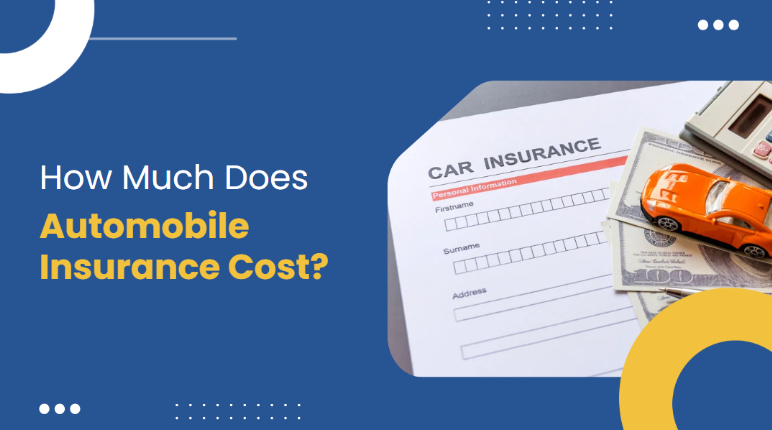
Understanding automobile insurance costs is crucial for every driver. Moreover, knowing what affects your premiums helps you make smart choices. Additionally, comparing rates saves you money each year. Therefore, let’s explore everything about automobile insurance pricing.
The Jordan Insurance Agency has helped thousands of customers find affordable coverage. Furthermore, we know exactly what factors impact your automobile insurance costs. Consequently, this guide will answer all your questions about car insurance pricing.
What Affects Automobile Insurance Cost
Several key factors determine your automobile insurance premiums. First, your driving record plays the biggest role in pricing. Second, your age and gender affect rates significantly. Third, your location impacts costs due to local crime rates. Fourth, your vehicle type and value influence premiums. Finally, your credit score affects pricing in most states.
Insurance companies use these factors to calculate risk. Hence, safer drivers pay lower premiums. Similarly, people in safer areas get better rates. Additionally, newer cars cost more to insure than older ones. However, safety features can reduce your automobile insurance cost.
Your coverage choices also impact pricing. Specifically, higher deductibles lower your premiums. Conversely, comprehensive coverage increases costs. Meanwhile, liability only policies cost less than full coverage. Still, adequate protection is essential for financial security.
Average Automobile Insurance Cost by State
Automobile insurance costs vary dramatically by location. For instance, Michigan has the highest average rates at $2,639 annually. Maine offers the lowest rates at $965 per year. So, your state significantly impacts your insurance expenses.
Urban areas typically have higher automobile insurance costs than rural regions. This happens because cities have more accidents and thefts. Additionally, higher population density increases claim frequency. Furthermore, repair costs are often higher in metropolitan areas.
Weather patterns also affect regional pricing. States with frequent storms pay more for comprehensive coverage. Similarly, areas with harsh winters see higher claim rates. So, these factors increase automobile insurance premiums across entire regions.
Factors That Increase Your Automobile Insurance Cost
Age is the primary factor affecting automobile insurance pricing. Specifically, drivers under 25 pay the highest rates. This occurs because young drivers have more accidents. But, rates decrease as drivers gain experience. Additionally, senior drivers may see slight increases after age 70.
Your driving record directly impacts your automobile insurance cost. For example, speeding tickets can increase premiums by 20 to 30%. Meanwhile, accidents raise rates even more significantly. So, maintaining a clean record saves a lot of money. Furthermore, defensive driving courses can reduce premiums in some states.
Credit scores affect automobile insurance in most states. Poor credit can double your insurance costs. This happens because insurers view low credit as an increased risk. However, some states prohibit credit based pricing. Even so, improving your credit score benefits your finances .
Vehicle choice significantly impacts your automobile insurance cost. Sports cars and luxury vehicles cost more to insure. This occurs because they’re expensive to repair and attractive to thieves. Conversely, family sedans and minivans have lower rates. Additionally, vehicles with high safety ratings qualify for discounts.
How to Reduce Your Automobile Insurance Cost

Shopping around is the best way to lower automobile insurance costs. Different companies offer varying rates for identical coverage. So, comparing quotes can save hundreds annually. Additionally, many insurers offer online quotes for convenience. Furthermore, working with agents helps you find the best deals.
Bundle discounts significantly reduce your automobile insurance premiums. Specifically, combining auto and home insurance saves 10-25%. Similarly, adding renters insurance creates extra savings. Moreover, staying with one company often provides loyalty discounts. But, still compare rates periodically to ensure competitive pricing.
Safe driving programs can lower your automobile insurance costs substantially. Many insurers offer telematics programs that track driving habits. Good drivers receive discounts up to 30%. Additionally, these programs provide feedback to improve driving skills. Furthermore, some companies offer immediate discounts for participation.
Higher deductibles reduce your automobile insurance premiums significantly. For instance, increasing your deductible from $500 to $1,000 can save 15-20%. But, ensure you can afford the higher out of pocket costs. Additionally, consider your vehicle’s value when choosing deductibles. Meanwhile, older cars may not need comprehensive coverage.
Understanding Automobile Insurance Coverage Types
Liability coverage is mandatory in most states for automobile insurance. This coverage pays for damage you cause to others. Additionally, it covers medical expenses for injured parties. However, it does not cover your own vehicle damage. So, liability only policies have the lowest automobile insurance cost.
Comprehensive coverage protects against non collision damage to your vehicle. This includes theft, vandalism, and weather damage. Additionally, it covers animal collisions and falling objects. But, comprehensive coverage increases your automobile insurance cost significantly. Still, valuable for newer or financed vehicles.
Collision coverage pays for damage from accidents regardless of fault. This protection is essential for expensive vehicles. Additionally, lenders need collision coverage for financed cars. However, older vehicles may not justify the automobile insurance cost increase. So, consider your car’s value when deciding on collision coverage.
Uninsured motorist coverage protects you from drivers without insurance. This coverage is mandatory in many states. Additionally, it covers hit and run accidents in most policies. Furthermore, underinsured motorist coverage fills gaps in other drivers’ policies. Meanwhile, these coverages add minimal costs to your automobile insurance.
Monthly vs Annual Automobile Insurance Cost
Most people pay automobile insurance monthly for budgeting convenience. But, annual payments often provide significant discounts. Specifically, paying annually can save 5-10% on premiums. Additionally, you avoid monthly processing fees with annual payments. So, consider your cash flow when choosing payment schedules.
Monthly automobile insurance costs seem more manageable for many families. This approach helps with tight monthly budgets. Additionally, it allows easier switching between insurers. However, missing payments can result in policy cancellation. Furthermore, reinstating coverage after cancellation increases future rates.
Some insurers offer semi annual payment options as a compromise. This reduces the burden of large annual payments. Additionally, it still provides some discount benefits. Moreover, it reduces the risk of payment related cancellations. Hence, semi annual payments balance convenience and savings effectively.
Automobile Insurance Costs for Different Age Groups
Teen drivers face the highest automobile insurance costs due to inexperience. Specifically, 16-year-old drivers pay 2 to 3 times adult rates. This occurs because teenagers have the highest accident rates. However, good student discounts can reduce these costs. Additionally, driver’s education courses provide extra savings opportunities.
Young adults see gradual decreases in automobile insurance costs through their twenties. Most drivers achieve standard rates by age 25. This happens as driving experience increases and risk decreases. Furthermore, marriage often provides extra discounts for young adults. Meanwhile, maintaining clean driving records accelerates rate improvements.
Middle aged drivers typically enjoy the lowest automobile insurance costs. This group has the most experience and fewest accidents. Additionally, they often qualify for many discounts simultaneously. However, rates may increase slightly after age 65. Still, senior discounts often offset these increases.
The Impact of Vehicle Type on Automobile Insurance Costs
Sports cars and high performance vehicles have the highest automobile insurance costs. These cars are expensive to repair and attractive to thieves. Additionally, they’re often driven more aggressively than family cars. So, insurers charge premium rates for these vehicles. However, safety features can help reduce costs somewhat.
Family vehicles typically have moderate automobile insurance costs. Sedans, SUVs, and minivans balance safety and affordability. Additionally, these vehicles have reasonable repair costs. Furthermore, they’re less likely to be stolen than luxury cars. So, families often find reasonable insurance rates for practical vehicles.
Electric and hybrid vehicles may have higher automobile insurance costs initially. This occurs because repair costs are often higher for these vehicles. Additionally, parts may be more expensive or harder to find. But, some insurers offer green vehicle discounts. Furthermore, safety features in these cars can reduce premiums.
How Credit Scores Affect Automobile Insurance Cost
Credit scores significantly impact automobile insurance costs in most states. Poor credit can increase premiums by 50 to 100% compared to excellent credit. This happens because insurers view credit as a risk indicator. Additionally, people with poor credit file more claims statistically. Therefore, improving credit scores can substantially reduce insurance costs.
Several states prohibit credit based insurance pricing entirely. California, Hawaii, and Massachusetts ban this practice completely. Additionally, other states limit how much credit can affect rates. Therefore, check your state’s regulations regarding credit based pricing. Meanwhile, maintaining good credit benefits your overall financial health.
Improving your credit score takes time but reduces automobile insurance costs significantly. Pay bills on time and reduce credit card balances. Additionally, check credit reports for errors and dispute inaccuracies. Furthermore, avoid closing old credit accounts unnecessarily. Hence, good credit habits benefit both insurance rates and loan terms.
Tips for First Time Automobile Insurance Buyers

First time buyers should start by understanding minimum coverage requirements. Each state mandates different liability limits for automobile insurance. Additionally, consider whether you need comprehensive and collision coverage. Furthermore, evaluate your financial situation to determine appropriate deductibles. Therefore, understanding the basics helps you make informed decisions about automobile insurance costs.
Shopping around is crucial for new automobile insurance buyers. Different companies specialize in various customer segments. Additionally, some insurers offer better rates for new drivers. Furthermore, comparing quotes reveals significant price differences. Meanwhile, don’t focus on automobile insurance costs; consider customer service quality too.
FAQs About Automobile Insurance Costs
How much is car insurance per month?
The average monthly car insurance payment is approximately $140 to $180 nationally. However, your actual automobile insurance cost depends on many factors. Additionally, your location, age, and driving record significantly impact pricing. So, individual rates vary substantially from national averages.
Is $200 a month a lot for car insurance?
$200 monthly is above average for automobile insurance cost nationally. However, this amount may be reasonable for young drivers or those with violations. Additionally, luxury vehicles and comprehensive coverage increase monthly premiums. Therefore, compare quotes to determine if you’re paying competitively.
How much does an average American pay for car insurance?
The average American pays about $1,700 annually for automobile insurance. This equals roughly $142 per month for coverage. Additionally, rates vary significantly by state and individual circumstances. Therefore, your actual automobile insurance cost may differ from national averages.
Is $100 a month expensive for car insurance?
$100 monthly is below the national average for automobile insurance cost. This represents good value for most drivers with clean records. Additionally, this rate suggests you have adequate coverage at competitive pricing. However, ensure your coverage meets your protection needs adequately.

